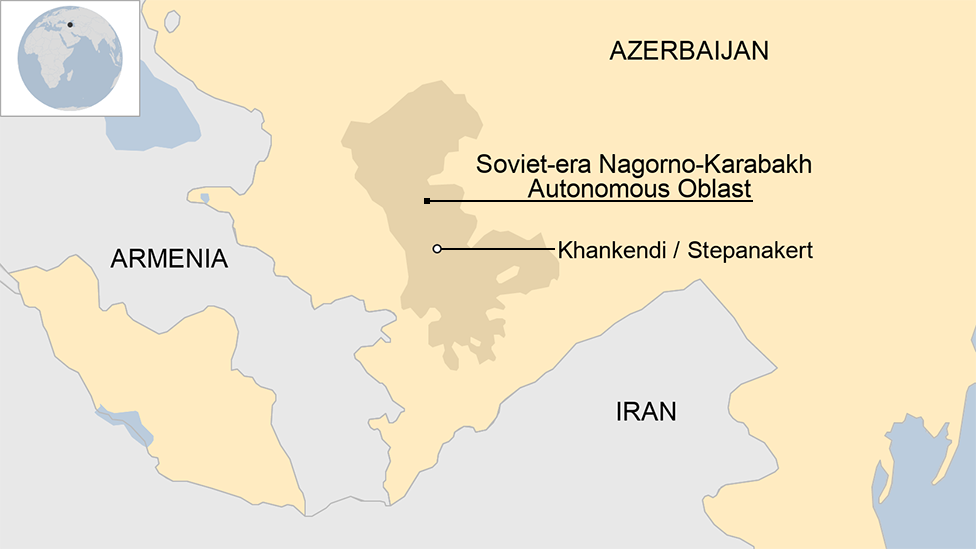Nagorno-Karabakh: Fighting mood grips Armenians
- Published
People gathered in Stepanakert tell the BBC's Rayhan Demytrie that they hope the ceasefire holds, but they are cautious
Stepanakert's central square is a hive of activity after four days of clashes - uncharacteristically for the sleepy capital of Armenian-controlled Nagorno-Karabakh.
There are men in military uniform, civilians gathered outside the union of war veterans, trucks delivering humanitarian aid from different parts of Armenia, as well as satellite trucks and journalists,
Like many other towns and villages in the mountainous Caucasus enclave, Stepanakert has an Azeri name too - Khankendi.
I approach a woman who is having an emotional phone conversation with one of her students on the front line.
"For 20 years I've been involved in peace-building activities. I used to teach my students that those people who left their homes as a result of the 1990s war have the right to return, but today I denounce my own words," says Zhanna Krikorova, who runs a student theatre at a local university.
"We don't trust anyone anymore, we can only rely on ourselves, on those young men who are fighting there."
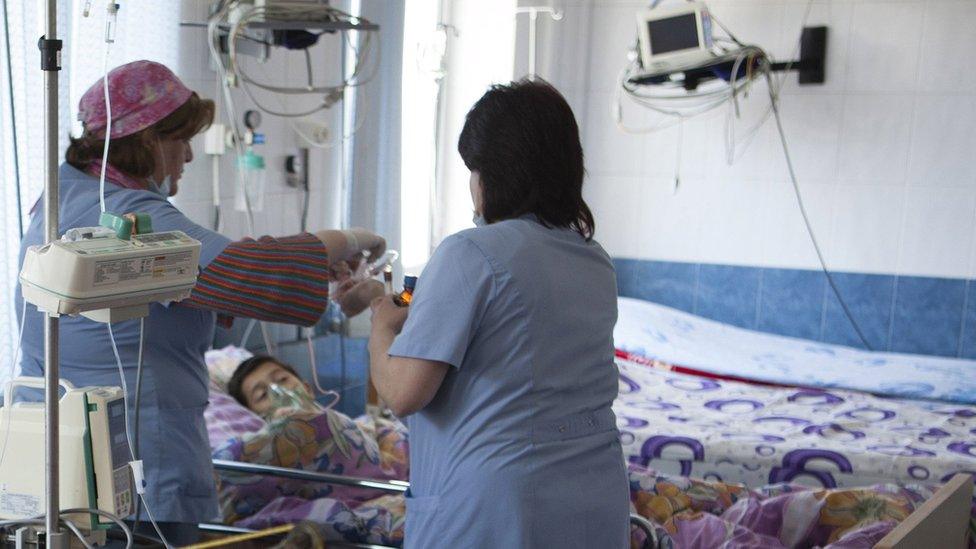
An Armenian boy in a Stepanakert hospital is among the casualties of the latest flare-up
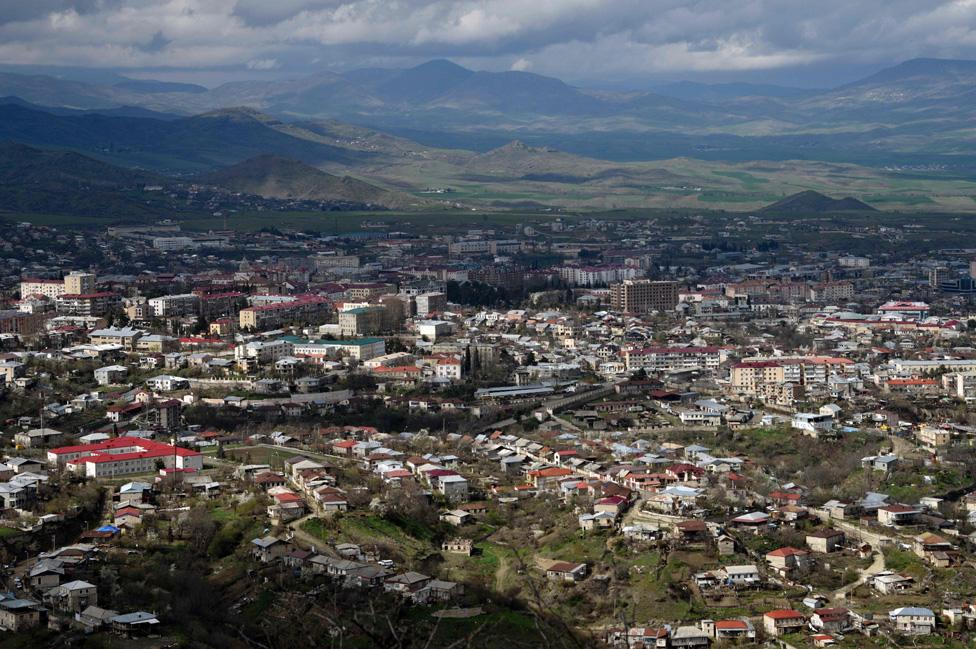
Stepanakert: There is no international recognition for the Armenian authorities controlling Nagorno-Karabakh
The warring sides reached a ceasefire on Tuesday, less than 24 hours after Azerbaijan threatened to attack Stepanakert.
But given the level of hostilities of the past few days, in which dozens of soldiers on both sides have died, the ceasefire is being treated with caution.
In the veterans' union building Khasnik Mikailyan, who heads an organisation called "Motherland", says Karabakh Armenians have been living in a powder keg for more than 20 years, knowing that war might start at any moment, so the events of the past few days did not come as surprise. On the contrary, it united Armenians.
The BBC's Rayhan Demytrie on the road which links Armenia to the disputed Nagorno-Karabakh region
"This morning a group of schoolboys turned up in my office with their backpacks telling me they were ready to go and fight in the war," says Khasnik, holding a piece of paper with their names and telephone numbers.
"Everyone is ready to fight for their motherland. I gave them a hug and a kiss and said that we needed them to study well."
Long-running conflict
Both Armenians and Azeris consider the mountainous region as their cultural and historical cradle. At the heart of this conflict is a centuries-old land dispute.
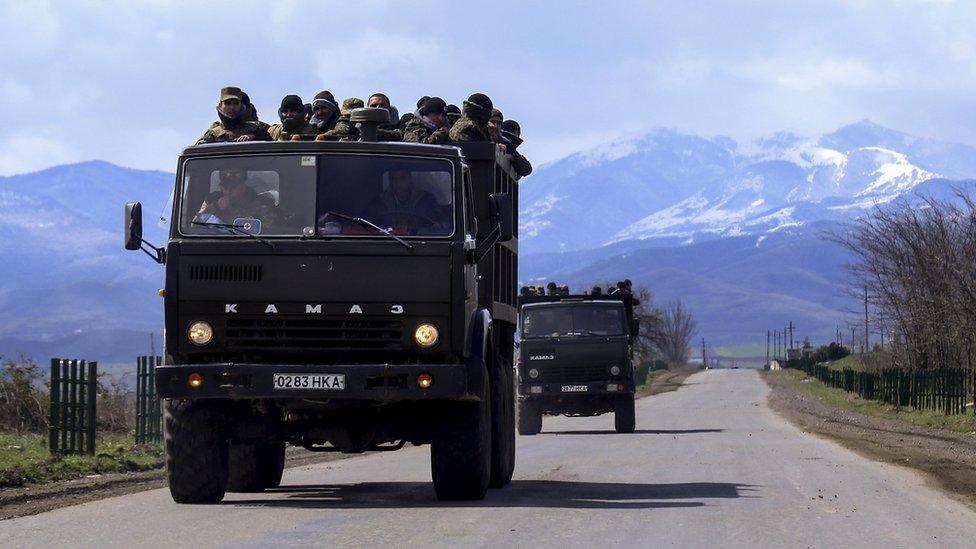
Hundreds of volunteers from across Armenia have reportedly signed up to help resist Azerbaijan
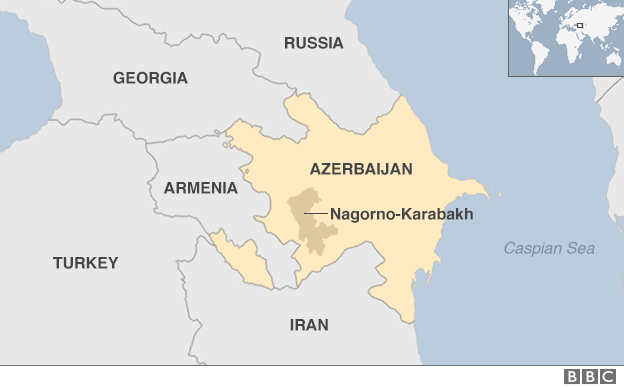
In Soviet times, Nagorno-Karabakh was populated largely by ethnic Armenians, as an autonomous region within Azerbaijan. As the Soviet Union began to disintegrate, the ethnic Armenians sought unification with Armenia, which led to war.
Some 30,000 people were killed in the war in the 1990s. Hundreds of thousands of ethnic Azeris who once lived in Nagorno-Karabakh and in seven adjacent regions were displaced by the conflict.
A new republic unrecognised by the international community came into existence. Armenia, while never officially recognising Nagorno-Karabakh's "independence", became its main financial and military backer.
In Azerbaijan the pain over the lost land never eased. On the contrary, years of propaganda on both sides nurtured a whole generation of young people who despise each other.
Standing among the group of men outside the veterans' union, Karen Andrian, who fought in the 1990s war, says the rules of war have changed over the years.
"Now it's a war of hi-tech weapons, war tactics have changed - no more infantry, or the type of guns we fought with."
Is it scarier now? I ask.
"It was pretty scary then too. War is war. Was it Leo Tolstoy who said that war is the greatest stupidity invented by mankind?"

Why does this conflict matter?
It has contributed to instability in Azerbaijan, a major oil and gas exporter in the region, and an estimated one million people were displaced by the war in the 1990s. About 30,000 people died in that war.
Russia has traditionally supported the Christian Armenians, while Turkey is an ally of Azerbaijan. Russia and Turkey are locked in a bitter dispute over the war in Syria.
How big is the disputed area?
It is a mountainous region of about 4,400 sq km (1,700 sq miles), though the separatist forces captured some extra territory around the enclave in Azerbaijan in the 1990s war.
What about the international impact?
Russian Foreign Minister Sergei Lavrov and US Secretary of State John Kerry have expressed serious concern and called on both sides to stop fighting.
The UN has expressed support for Azerbaijan's territorial integrity and demanded Armenian forces withdraw., external

- Published5 April 2016
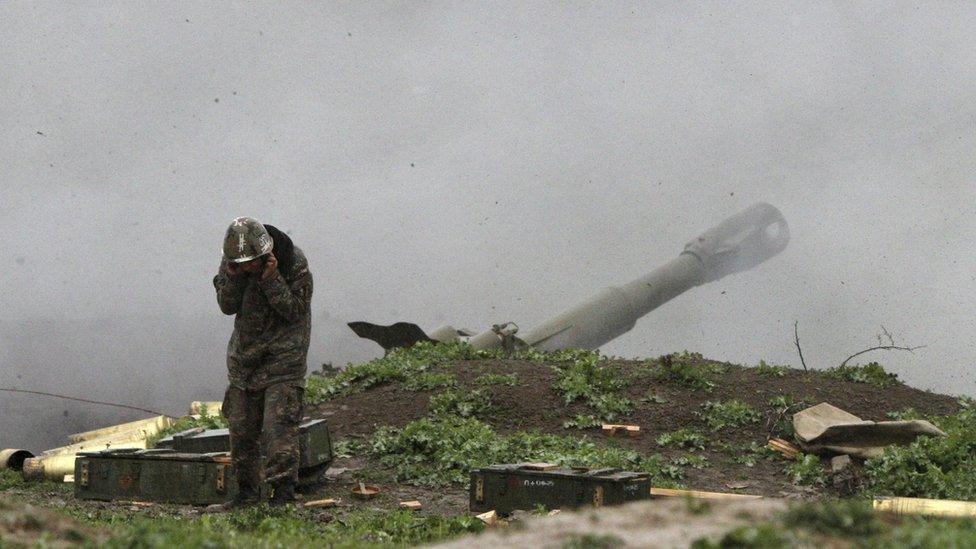
- Published3 April 2016

- Published8 January 2015
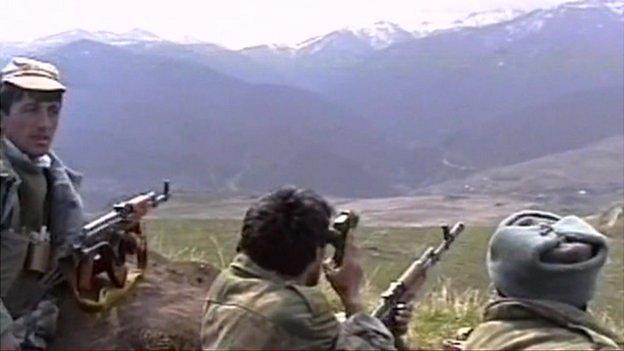
- Published30 January 2024
